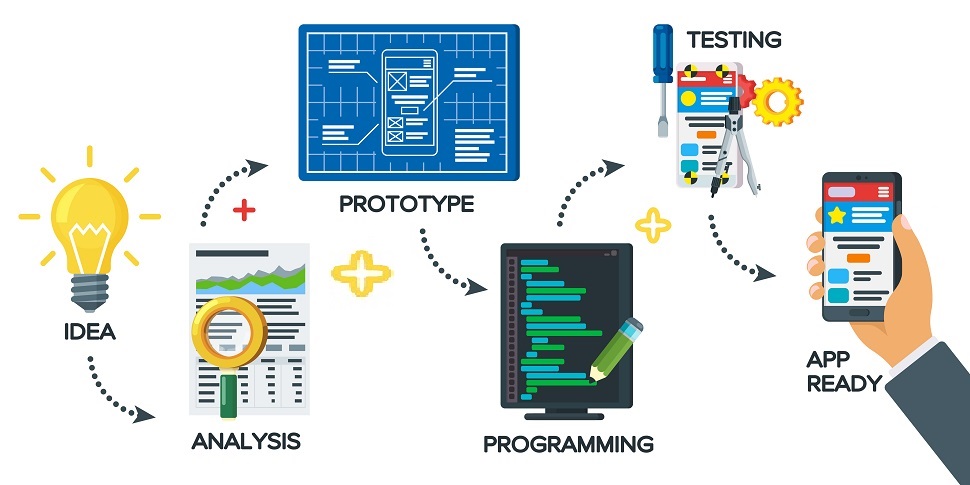Everyone has a unique app idea and everyone wants to translate their ideas into reality by making their own mobile apps. But, the problem for most people is that they have no clue where to begin or (add- whether) they can’t afford a good mobile app development company. Building the first mobile app can be stressful and tough.
To make it easier for you, here’s a step-by-step guide to building your first mobile app.
Step 1: Set a Clear Goal
Your idea is the beginning, the initiation point. Before initializing on your app, you must clearly lay down the function and purpose of your mobile app, and you need to have a clear idea of who your target audience is and what their needs are. It is important to know what your app will do in this regard and how. Also, you must be clear about the issues it is going to target and what area of everyday life is it going to improve.
Once you get a better understanding of the needs of your target audience, you are ready to move to the next step.
Step 2: Research the market
A little research up front can save you a lot of trouble down the road. There’s already an app for almost everything, so it becomes nearly impossible to think of a totally unique mobile app. On a positive note, existing apps can have drawbacks, and this is where you can start by improving, innovating and reinventing.
The research process allows you to get a better understanding of how to ship your application to the market and how you will approach your potential users.
Step 3: Create Wireframes or Flow Charts
It is time to give your ideas a shape by creating a mockup or prototype of your app. There are several prototyping tools online which can not only help you drag and drop items but also allow you to click through your app in review mode.

Step 4: Defining the Back End of Your Mobile App
It is equally important to set up your APIs, servers and data charts, once you are done with creating the wireframes. Backend is required for storing information, or managing content. You can host the backend on your own server, customize it to your requirement and gain complete control over the server, but if you don’t have time to manage the server you can always consider clouds.
Step 5: Design Your App
The app design is very crucial to user experience. Choose a simple but appealing design. Designing takes a lot of consideration and professional skills, especially when you want your app to be in demand. You can hire the services of a skilled developer who is capable of giving your app a user-friendly and convenient feel.
Step 6: Prototype Testing
Prototype testing is very important before developing the complete app. Get others to review your project and see how they feel towards your app. Let them test run it and note if there are any flaws or whether the testers are satisfied or not. You need to adapt your UI/UX based on the feedback you receive.
Step 7: Determine Analytics
Integrating analytics into your app will help you keep tabs on the number of times your app has been downloaded, what are the user engagement levels and how many of the users are being retained by your app.
This guide to building your first mobile application will enable you to be in control of your app building process and help you substantiate your idea effectively.

